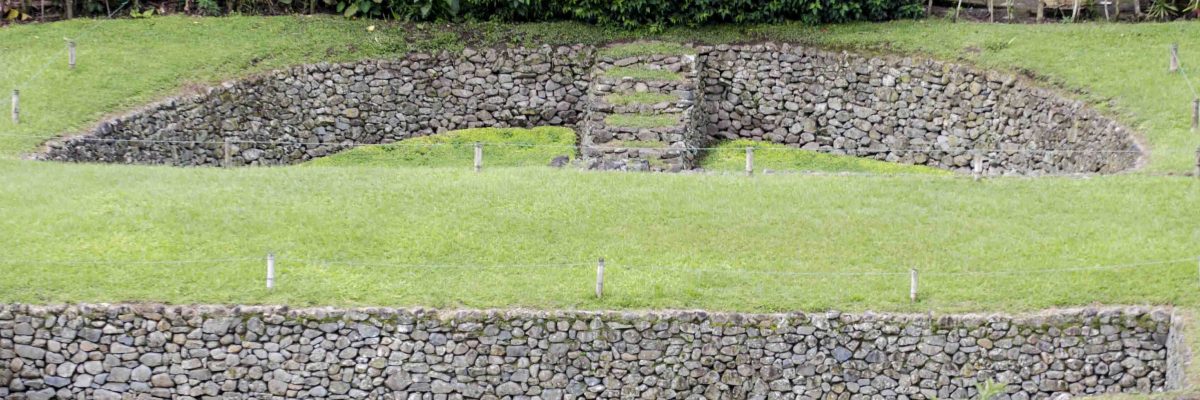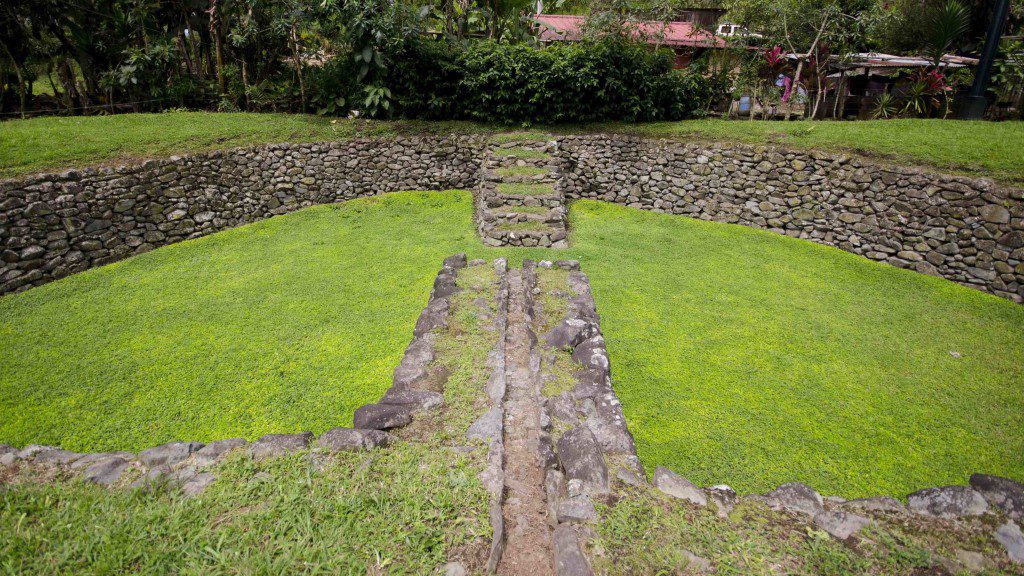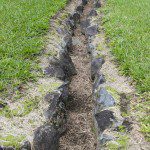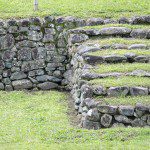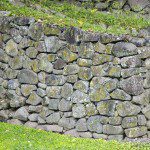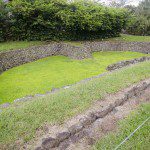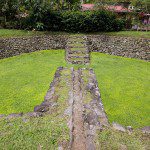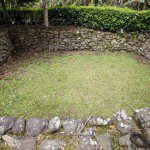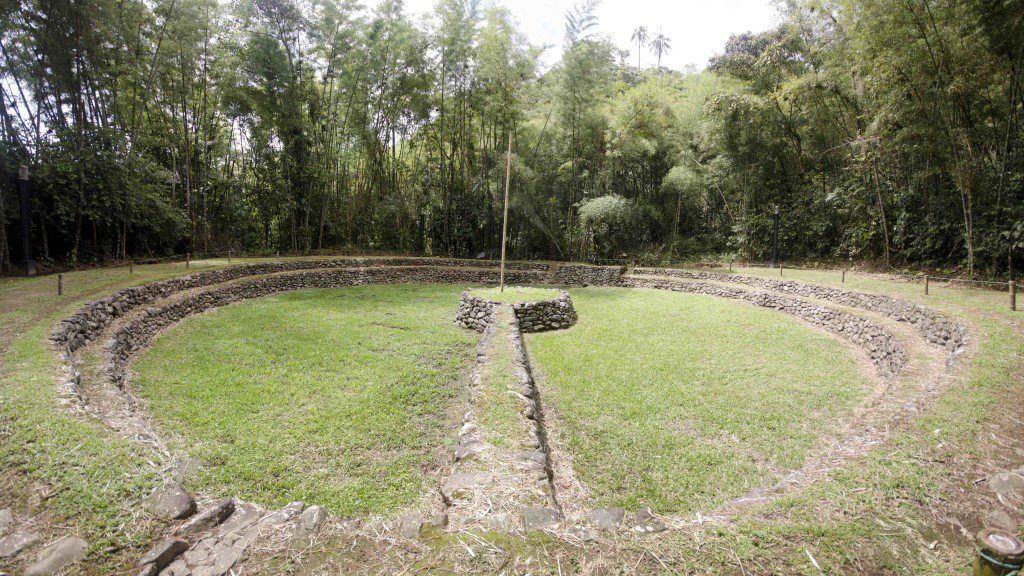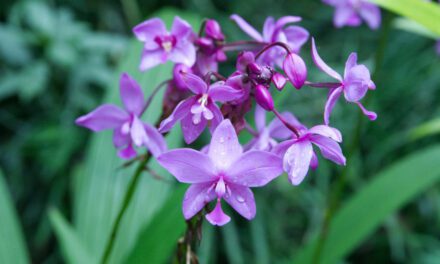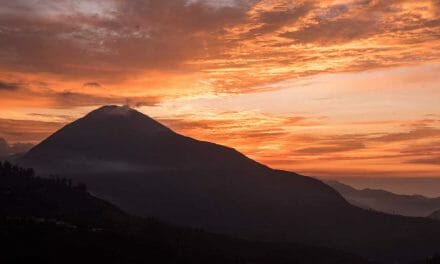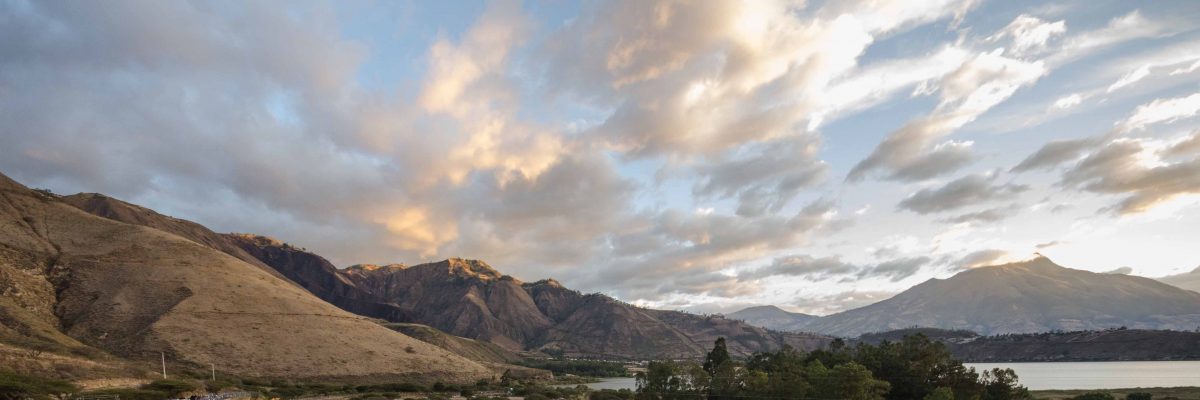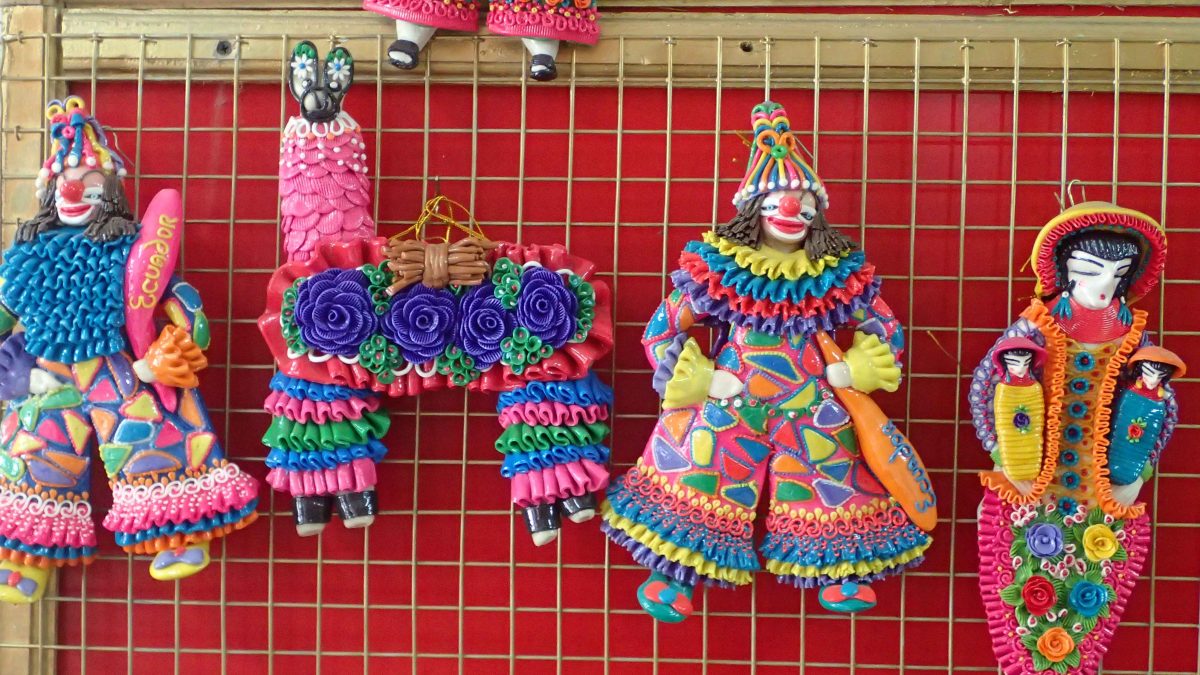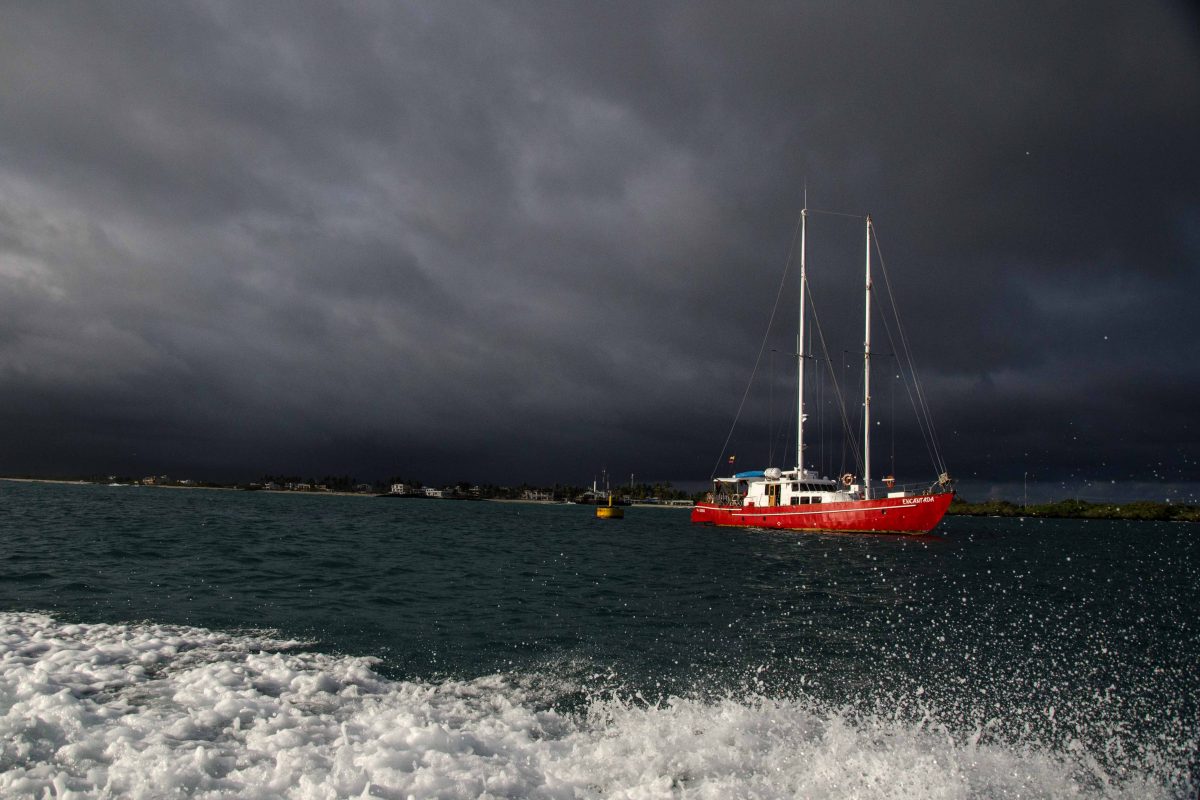 Love archeology? Then the museum and excavations at Tulipe are a must-see. This lesser-known destination is only a day trip outside of Quito, not far from the town of Nanegalito, and could easily be visited as a side trip on your way to or from Mindo or the coast.
Love archeology? Then the museum and excavations at Tulipe are a must-see. This lesser-known destination is only a day trip outside of Quito, not far from the town of Nanegalito, and could easily be visited as a side trip on your way to or from Mindo or the coast.
The main archaeology complex includes 6 different pools: two are rectangular, two more directly above them are half-circles, one is the shape of a polygon, and the final pool is a small square. The bottom of each pool is covered with an emerald green carpet of vegetation that contrasts beautifully with the ancient gray stones of the walls and steps.
 Many people have guessed the reasons for the pool’s existence but few facts are actually known. We know that the water came from a local spring, one that likely disappeared during a volcanic eruption or large earthquake. We know that the water was directed via aqueduct from the smallest pool to each of the larger pools, all of which had staircases leading into them. Scientists have theorized that the pools could have had religious purposes, not unlike baptismal fonts, or astronomical purposes, providing mirror-like surfaces that would reflect the night sky.
Many people have guessed the reasons for the pool’s existence but few facts are actually known. We know that the water came from a local spring, one that likely disappeared during a volcanic eruption or large earthquake. We know that the water was directed via aqueduct from the smallest pool to each of the larger pools, all of which had staircases leading into them. Scientists have theorized that the pools could have had religious purposes, not unlike baptismal fonts, or astronomical purposes, providing mirror-like surfaces that would reflect the night sky.
The people who built these pools were the Yumbo, a tribe that dates to 800AD that survived until after the Spanish conquest in the late 1500s. There are Inca ruins just up the hillside from this location, suggesting that the Inca found this site important and may have attempted to control the source of the spring that fed these pools. But attempts by the Inca to conquer these lands were interrupted by the arrival of the Spanish. Direct connection with the Yumbo culture was lost for two reasons – sickness brought by Europeans severely decimated the population. Survivors of disease left the area after the eruption of the volcano Pichincha in 1660 when their land was covered by volcanic ash.
- Canal
- Steps into a pool
- Detail of a wall
- Half-circle pool
- Polygonal Pool
- Half Circle Pool
- Square Pool
A short walk from the main complex, is the penultimate pool, a large circle about 30 feet in diameter. The walls are lined with gray volcanic rock, a bench-like structure lines the circumference of the pool, and a peninsula like pathway bisects part of the pool and leads to a small platform at its center. Again, the purpose of the pool is unknown but my imagination led me to see people sitting or standing around this water filled place, perhaps partially submerged and standing on the bench while focusing their attention to the center where a single person, a shaman perhaps, spoke across the water. Perhaps your imagination will lead you to a different interpretation. Either way, this place begs to explained and with little known about the people or the culture, we are likely to never truly understand.
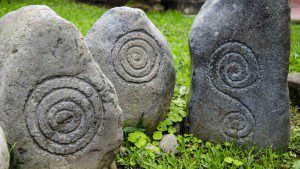 This site and other less known digs in the area give us few clues to the culture and people. They did leave petroglyphs by the water, intricately carved designs slowly being worn away by the rivers and waterfalls where they were originally carved. In fact, if you want to make a full day of archaeology exploration, there are more artifacts to be explored by the Cascada del Gallo de la Pena. And a local guide would likely be able to point out even more… this is an area ripe for discovery.
This site and other less known digs in the area give us few clues to the culture and people. They did leave petroglyphs by the water, intricately carved designs slowly being worn away by the rivers and waterfalls where they were originally carved. In fact, if you want to make a full day of archaeology exploration, there are more artifacts to be explored by the Cascada del Gallo de la Pena. And a local guide would likely be able to point out even more… this is an area ripe for discovery.

